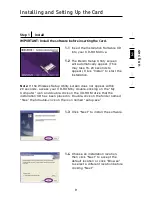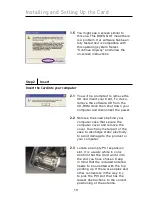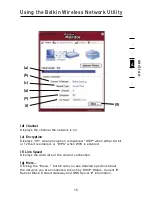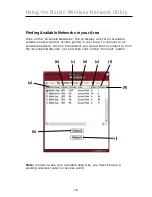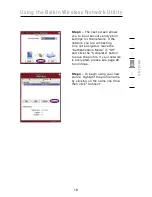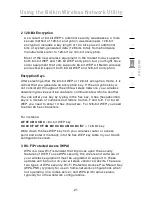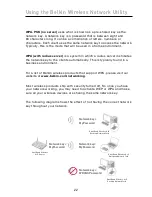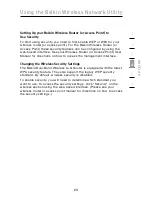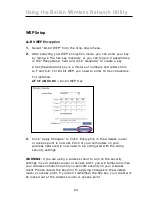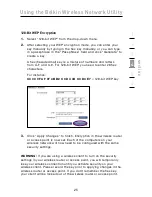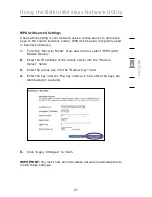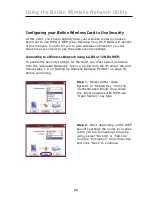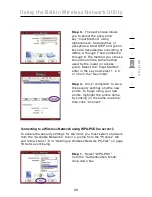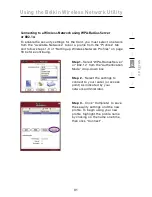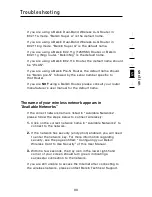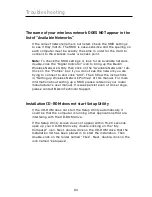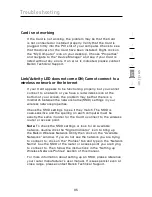
21
Using the Belkin Wireless Network Utility
21
se
ct
io
n
1
2
3
4
5
6
2 128-Bit Encryption
As a result of 64-bit WEP’s potential security weaknesses, a more
secure method of 128-bit encryption was developed. 128-bit
encryption includes a key length of 104 bits plus 24 additional
bits of system-generated data (128 bits total). Some hardware
manufacturers refer to 128-bit as 104-bit encryption.
Most of the new wireless equipment in the market today supports
both 64-bit WEP and 128-bit WEP encryption, but you might have
older equipment that only supports 64-bit WEP. All Belkin wireless
products will support both 64-bit WEP and 128-bit encryption.
Encryption Keys
After selecting either the 64-bit WEP or 128-bit encryption mode, it is
critical that you generate an encryption key. If the encryption key is
not consistent throughout the entire wireless network, your wireless
networking devices will be unable to communicate with one another.
You can enter your key by typing in the hex key. A hex (hexadecimal)
key is a mixture of numbers and letters from A–F and 0–9. For 64-bit
WEP, you need to enter 10 hex characters. For 128-bit WEP, you need
to enter 26 hex characters.
For instance:
AF 0F 4B C3 D4
= 64-bit WEP key
C3 03 0F AF 0F 4B B2 C3 D4 4B C3 D4 E7
= 128-bit key
Write down the hex WEP key from your wireless router or access
point and enter it manually into the hex WEP key table in your Card’s
configuration screen.
3 Wi-Fi Protected Access (WPA)
WPA is a new Wi-Fi standard that improves upon the security
features of WEP. To use WPA security, the drivers and software of
your wireless equipment must be upgraded to support it. These
updates will be found on your wireless vendor’s website. There are
two types of WPA security: Wi-Fi Protected Access-Pre-Shared Key
(WPA-PSK), typically for use in home-network configurations when
not operating on a radius server; and WPA (with radius server),
typically for office-network configurations.



